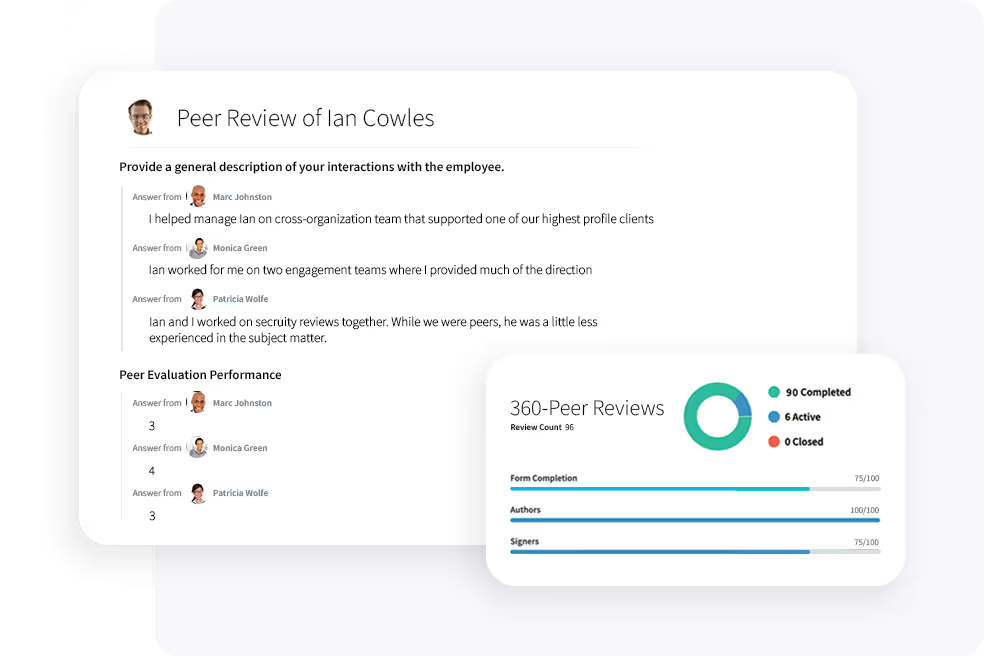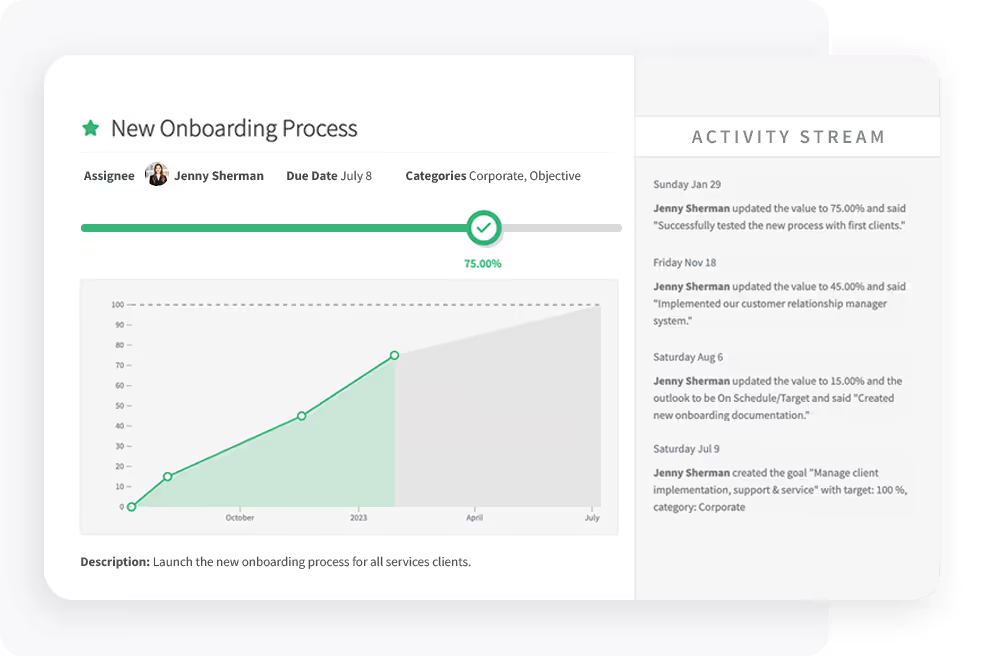6 Employee Development Areas to Emphasize in 2025
In today's dynamic workplace, prioritizing employee development is crucial for fostering a productive and motivated workforce. Understanding the key areas of development not only helps in enhancing individual performance but also contributes to overall organizational success. This introductory section elucidates the importance of focusing on employee development areas, and their impact on workplace performance, and provides a clear definition of what constitutes these areas.
Understanding the Importance of Employee Development
Employee development involves continuous learning and skill enhancement that aligns with both individual career growth and organizational goals. Investing in development programs leads to higher employee satisfaction, better retention rates, and a competitive edge in the market. Employees who perceive growth opportunities are more likely to be engaged and committed to the organization.
The Impact of Development on Workplace Performance
Employee development areas in the workplace directly correlate with improved performance. Well-rounded development programs address gaps in skills and knowledge, equipping employees to meet the evolving demands of their roles. This leads to increased efficiency, innovation, and productivity within teams.
Defining Areas of Development
When we talk about areas of development, we refer to specific aspects of an employee's skill set or knowledge base that require enhancement. Common development areas include technical skills, soft skills such as communication and leadership, and professional competencies like project management and strategic thinking. Identifying and addressing these areas systematically can transform individual capabilities and drive organizational success.
» The Ultimate Guide to Compensation Planning
How do you identify employee areas for development?
Identifying individual development needs is the cornerstone of any robust employee development program. Recognizing the specific areas for employee progression helps HR professionals tailor development plans that meet both personal and organizational goals. Employees often require various forms of growth, which can range from technical skills to soft skills, such as communication and leadership.
Resource: Free Employee Coaching Template
Identifying Individual Development Needs
Understanding the unique strengths and weaknesses of each employee is essential. This often starts with conducting performance reviews and soliciting feedback from peers, managers, and the employees themselves. By doing so, HR professionals can determine the exact development areas for appraisal. Tools like 360-degree feedback and self-assessment questionnaires are particularly useful in this context.
Using Common Development Areas in the Workplace
While each organization will have unique requirements, several common development areas frequently emerge. These include improving time management, enhancing communication skills, and developing better problem-solving abilities. A keen focus on these areas for development or improvement examples can significantly boost overall workplace productivity and employee satisfaction.
Prioritizing Development Areas
The first step is to conduct a thorough self-assessment. Use performance reviews, feedback from managers and peers, and self-reflection exercises to identify where you need improvement. This will give you a clear picture of your strengths and development areas. Once identified, categorize them based on their impact and immediacy. For example, if poor communication is hindering team collaboration, prioritize improving your communication skills.
Balancing Strengths and Areas for Improvement
While focusing on development areas, it’s equally important to recognize and leverage your strengths. For example, if you are an excellent project manager but lack technical skills, allocate time for technical training while continuing to use your project management skills to lead teams effectively. Balancing these aspects ensures comprehensive personal and professional growth.

What are the main employee development areas?
When it comes to addressing strengths and development areas for appraisal, it is crucial to focus on key areas that can significantly enhance both individual performance and organizational success. Here we explore three main development areas that often stand out in the workplace: communication skills, leadership and management capabilities, and technical proficiency and expertise.
1. Communication Skills
Communication skills are paramount in any workplace. Effective communication involves not only the ability to convey information clearly and concisely but also the capability to listen actively and provide constructive feedback. Strong communication skills foster better teamwork, reduce misunderstandings, and enhance overall productivity. Training in areas such as public speaking, active listening, and non-verbal communication can yield significant improvements.
2. Leadership and Management Capabilities
Developing leadership and management capabilities is essential for those in or aspiring to supervisory roles. Strong leadership involves inspiring and guiding teams toward achieving organizational goals. This area of development includes enhancing decision-making skills, conflict resolution, and strategic thinking. Providing access to leadership training programs and mentorship can help emerging leaders cultivate these crucial skills.
3. Technical Proficiency and Expertise
Technical proficiency and expertise are critical in ensuring that workers remain effective in their specific roles. As technology continually evolves, staying updated with the latest tools, techniques, and industry standards is imperative. Investing in ongoing education, certifications, and practical training sessions can help employees stay competitive and proficient in their respective fields.
By focusing on these three main development areas, organizations can ensure that their workforce remains dynamic, skilled, and ready to meet the challenges of today's ever-changing business landscape.
4. Professional Growth Strategies
Professional growth is a significant element in ensuring employee development areas in the workplace are adequately addressed. Organizations should implement strategies that focus on constant development and skill enhancement. One effective approach is to create Individual Development Plans (IDPs) for each employee. IDPs provide a tailored roadmap for growth, setting clear objectives and milestones. Additionally, fostering a culture of feedback and continuous improvement encourages employees to actively seek and embrace learning opportunities.

5. Mentorship and Coaching
Incorporating mentorship and coaching as part of the development strategy can be highly beneficial. Mentorship programs pair less experienced employees with seasoned professionals, enabling knowledge transfer and providing guidance on career progression. Coaching, on the other hand, focuses on improving specific skills and behaviors through regular, structured interactions with a coach. Both methods not only aid in skill development but also strengthen workplace relationships and morale.
6. Ongoing Training and Education
To keep up with industry trends and technological advancements, it is crucial to invest in ongoing training and education. Providing regular training sessions, workshops, and courses can help employees stay updated and proficient. Online learning platforms offer flexibility and a wide range of courses that can be tailored to individual career paths. Encouraging certifications and higher education also demonstrates a company's commitment to the professional growth of its workforce.
Tools for Assessing Development Needs
The efficient assessment of development needs requires leveraging multiple evaluation tools. Performance appraisals, employee surveys, and career development interviews are some of the most effective methods. These tools provide a comprehensive view of development areas for appraisal, enabling HR professionals to craft focused and effective development plans.
What are the top 3 development areas?
Identifying your top three development areas is a crucial step in personal and professional growth. These areas should align with both individual goals and organizational objectives, leading to overall improved performance and job satisfaction. Let’s dive into how you can prioritize these areas effectively and balance them with your existing strengths.
Examples of Top Development Areas
Common key areas of development for employees examples include:
- Communication Skills: Improving both verbal and written communication can enhance interaction within and outside the organization.
- Time Management: Efficient time management leads to better productivity and reduces stress.
- Technical Proficiency: Updating or acquiring new technical skills relevant to your role can significantly enhance job performance.
Conclusion
As we have explored, identifying key employee development areas is crucial for nurturing talent and driving workplace improvement. By understanding the meaning of areas of development and recognizing the importance of continuous growth, organizations can foster a culture of enhancement and innovation.
Summarizing the key development areas in the workplace, it is evident that professional growth strategies, mentorship, coaching, technical proficiency, and communication skills play significant roles in an employee’s overall development. Aiding employees to excel in these areas not only benefits the individual but also the organization by enhancing efficiency, productivity, and job satisfaction.
The role of continuous development cannot be overstated. It contributes to workplace success by ensuring that employees remain engaged, motivated, and equipped with up-to-date skills and knowledge. Employers who invest in ongoing training and education are more likely to retain top talent and cultivate a thriving workforce.
To implement these development plans effectively, organizations should take actionable steps such as conducting regular assessments, providing accessible resources for learning, and fostering a supportive environment that encourages feedback and collaboration. Tailoring development plans to meet the unique needs of each employee can lead to more personalized and impactful growth experiences.
Optimize and streamline your performance management with PerformYard. Our intuitive performance management software enhances employee reviews, goal management, and continuous feedback, making it easier for your organization to support growth and development. Equip your team with the tools they need to succeed, and watch your workplace transform.





